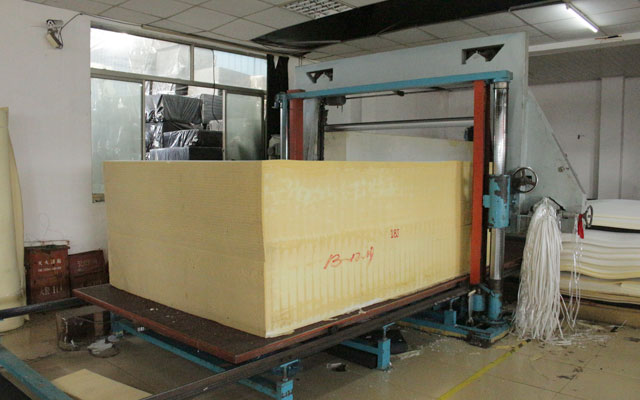How to Make Composite Sponge
Date:2018-10-10 Author: Click:
Compound sponge is a widely used material in our daily life. And composite sponges are not only used in various industries, but also an indispensable part of our daily life. For example, our daily mattresses and sofas are customized by sponges. The customization methods of composite sponges are as follows:
One step: After twice crystallization in water, the composite sponge was dried at 110 C for 48 hours.
Two steps: 6.408g triphenyl phosphine was dissolved in 30ml dry DMF (dimethylformamide, PVC data) and then participated in 7g iodine in quantity. After thorough dissolution, the composite sponge will participate. The mixture will reverberate for 18 hours at 70 C. At the same time, buffer reagent was used to adjust the pH value in the range of 8-10. The initial product was precipitated in methanol and purified from methanol by Soxhelet extraction (54%).
Three steps: The process is basically the same as the second step, but the iodine is replaced by bromine. However, in the experiment, we found that its purification is relatively difficult.

Four steps: Participate in 2.2309 TBDMS (tert-butyl dimethylchlorosilane, a polypeptide protectant, produced by Shanghai Gill Biochemical Co., Ltd.) (in 20 ml of dull pyridine) to 2.116g of composite sponge (in 30 ml of dull pyridine), and respond 24 hours at room temperature. The initial product was precipitated in water and crystallized in methanol. The extraction rate was 88%.
Five steps: 0.35g sodium hydride was added to 1-10 alkyl mercaptan and cooled with ice. The reaction time was 2 hours in 15ml DMF. Then, the product 0.102 g obtained from the second step reaction is dripped into the DMF environment of the dull lml. The mixture reacts at room temperature for 24 hours.
Six steps: 1.6g of 4-dimethylaminopyridine was added to the solution obtained in process 4 (0.6159 was cooled with ice cubes) (in 7 ml of dry pyridine). Participate in 2.6ml chlorononane. At 60 degrees, clean with full NaCI solvent.
Sponge custom-made composite sponges also need to add 1.7g sodium hydride to the product (cooled by ice) obtained in the fourth step of 0.5g, react for 2 hours in a 7ml dry DMF environment, and then drip 6.5ml of 1112 alkyl mercaptan. The reaction lasted for 5 days at 6 C. Then remove pyridine, participate in DCM, and clean with full NaCl solvent.





 15000160048
15000160048  110431250@qq.com
110431250@qq.com 021-5954-1477
021-5954-1477  The intersection of Xinqing Road and Yangtze East Road in Liuhe Town of Taicang City is 50 meters south/1.8 kilometers from Shanghai-Tai Road Checkpoint/1.5 kilometers from Liuxiang Road.
The intersection of Xinqing Road and Yangtze East Road in Liuhe Town of Taicang City is 50 meters south/1.8 kilometers from Shanghai-Tai Road Checkpoint/1.5 kilometers from Liuxiang Road.